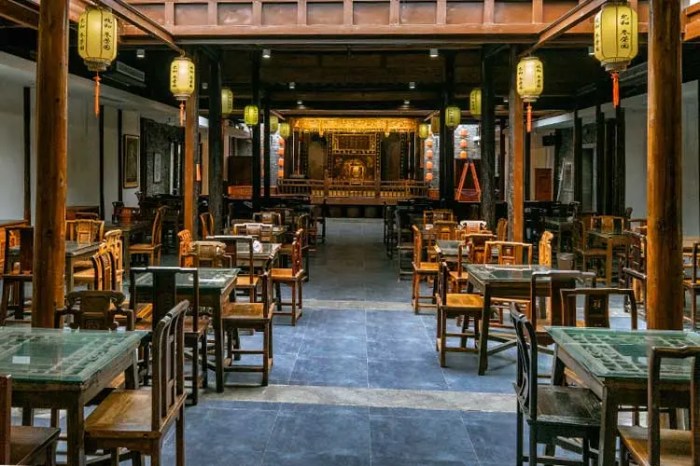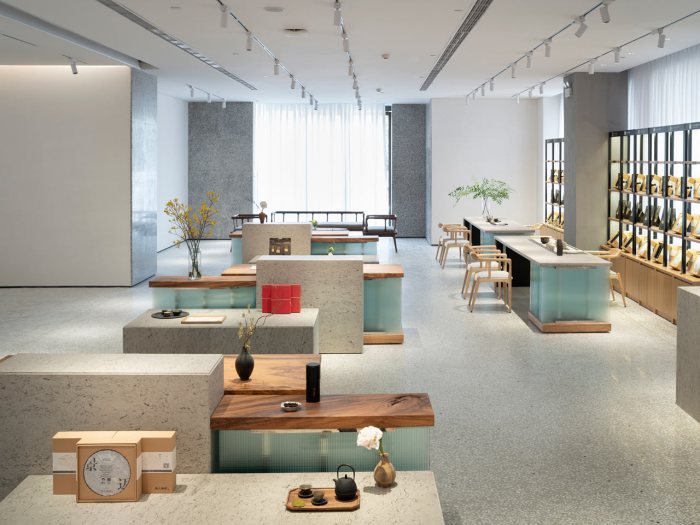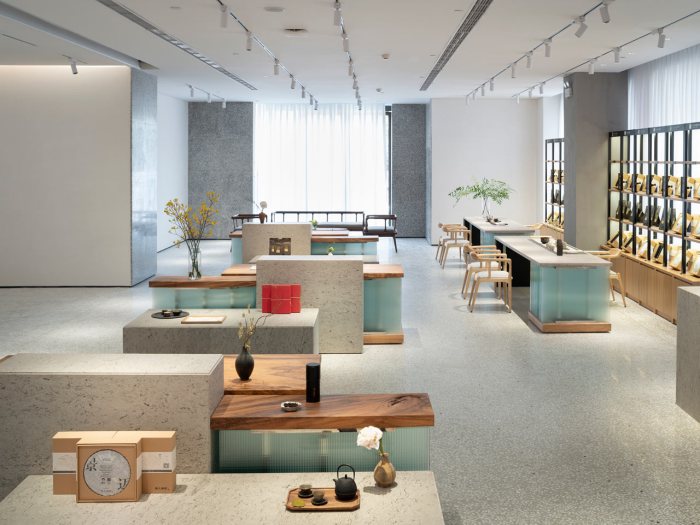Chinese tea house interior design takes center stage, inviting us to explore a rich tapestry of historical influences, spatial layouts, and aesthetic elements that create a haven for tranquility and cultural immersion. From the elegant curves of traditional furniture to the serene color palettes and the delicate interplay of light and shadow, every aspect of a Chinese tea house is carefully considered to evoke a sense of peace and connection.
Stepping into a Chinese tea house is like stepping back in time, where the art of tea ceremony and the appreciation of its subtle nuances are celebrated. This journey through the design elements of Chinese tea houses reveals the profound connection between aesthetics, functionality, and the pursuit of a harmonious experience.
Lighting and Atmosphere: Chinese Tea House Interior Design

The lighting scheme of a Chinese tea house plays a crucial role in creating a serene and inviting atmosphere. It’s not just about illuminating the space; it’s about enhancing the tea-drinking experience and creating a sense of tranquility that allows guests to relax and savor the moment.
Natural Light
Natural light is essential for creating a welcoming and comfortable ambiance in any space. In a Chinese tea house, strategically placed windows allow natural light to flood the interior, illuminating the tea ceremony and highlighting the intricate details of the decor.
Large windows, particularly those facing south, provide ample sunlight during the day, creating a bright and airy atmosphere. However, it’s crucial to consider the direction of the sun and use appropriate window treatments to manage the intensity of sunlight, preventing glare and maintaining a comfortable temperature.
Chinese tea house interior design often embraces a sense of tranquility and serenity, with intricate wood carvings, calming color palettes, and carefully curated furnishings. These elements can also be incorporated into a attic house interior design , creating a unique and inviting space for relaxation and contemplation.
The sloping ceilings and cozy nooks of an attic can perfectly complement the intimate atmosphere of a traditional tea house, offering a peaceful retreat from the everyday hustle and bustle.
Artificial Light Sources, Chinese tea house interior design
Artificial light sources complement natural light, providing illumination during the evening hours and enhancing the tea house’s ambiance. Different types of artificial lighting can be used to create distinct moods and highlight specific areas.
- Warm White Lighting: Warm white light, often used in traditional Chinese tea houses, creates a cozy and intimate atmosphere. It’s ideal for illuminating seating areas and enhancing the warmth of the wood and other natural materials used in the decor.
- Dimmable Lighting: Dimmable lights allow for flexibility in adjusting the brightness level according to the time of day and the mood desired. For example, during the day, the lights can be kept at a brighter setting, while they can be dimmed during the evening to create a more relaxed and intimate atmosphere.
- Accent Lighting: Accent lighting can be used to highlight specific features, such as the tea ceremony table, the teaware display, or artwork. This can be achieved using spotlights, track lighting, or even candles, creating visual interest and drawing attention to key elements of the space.
Chinese tea house interior design often emphasizes tranquility and natural elements, creating a serene atmosphere for guests to enjoy a cup of tea. This focus on simplicity and functionality can also be applied to smaller spaces, such as a 700 square feet house interior design , where maximizing space and creating a sense of openness is crucial.
By incorporating natural materials like bamboo and incorporating traditional Chinese design elements, even a compact home can achieve a similar sense of peacefulness and harmony often found in a Chinese tea house.
Lighting and Mood
Lighting plays a significant role in shaping the mood and ambiance of a Chinese tea house. Different lighting techniques can evoke a range of emotions, from serenity and tranquility to excitement and festivity.
Chinese tea house interior design often evokes a sense of tranquility and serenity. The use of natural materials like wood and bamboo, combined with traditional Chinese motifs, creates a welcoming and inviting atmosphere. If you’re looking for inspiration for your own home, you can find some amazing examples of interior design on the website for the best interior design house , which can give you ideas for incorporating similar elements into your own space.
These design principles can be applied to various settings, including a contemporary tea house, creating a unique and memorable experience for guests.
- Tranquility: Dimmed warm white lights, combined with soft music and the scent of tea, create a calming and relaxing atmosphere, perfect for a peaceful and contemplative tea-drinking experience.
- Intimacy: Strategically placed candles or dimmable lights can create a sense of intimacy and privacy, making guests feel more comfortable and relaxed.
- Festivity: Brighter lighting, combined with colorful lanterns and festive decorations, can create a lively and celebratory atmosphere, ideal for special occasions or celebrations.
Closing Notes

The essence of Chinese tea house interior design lies in its ability to create a sanctuary for the senses, where the ritual of tea drinking becomes a meditative journey. Through a careful balance of traditional and contemporary elements, these spaces offer a timeless escape, inviting us to savor the moment and appreciate the beauty of simplicity.
Question & Answer Hub
What are the essential elements of a traditional Chinese tea house?
Traditional Chinese tea houses often feature elements like a tea table, low seating, intricate carvings, calligraphy scrolls, and delicate teacups. These elements create a sense of serenity and respect for the tea ceremony.
How can I incorporate modern design elements into a Chinese tea house?
Modern interpretations of Chinese tea house design often incorporate minimalist aesthetics, sleek furniture, and innovative lighting techniques while still respecting traditional principles of balance and harmony.
What are some common materials used in Chinese tea house interiors?
Materials like wood, bamboo, stone, and fabric are frequently used to create a natural and calming ambiance. These materials are often treated with traditional techniques, adding to the authenticity of the space.

